There's a reason each of these teams earned a spot in Mark Schlabach's 2017 Way-Too-Early Top 25. Here is the best number or stat to know for each as we get deeper into spring practices.
1. Alabama: 73
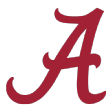
2. Florida State: 76

With Jimbo Fisher operating the offense, FSU isn't going to move at a frenzied pace. The Seminoles need to score when they get in the red zone, and last season they scored touchdowns on 76 percent of drives that reached their opponents' 20-yard line, which was second among Power 5 teams. Converting third downs is key too, and the Seminoles ranked 16th. Efficiency is the priority. -- Jared Shanker
3. USC: 86.8

As a redshirt freshman, Sam Darnold finished second nationally with a Total QBR of 86.8, better than that of Clemson's (national champion) Deshaun Watson, Louisville's (Heisman Trophy winner) Lamar Jackson and Washington's (Pac-12 champion) Jake Browning. The Trojans lost three starting offensive linemen, but they return Darnold, who had a full offseason as the undisputed starter. -- Chantel Jennings
4. Ohio State: 37.5

The Silver Bullets occasionally bend a little, but any opponent hoping to score against Ohio State had better plan on bypassing a stop inside the 20-yard line on the way to the end zone. Only one team in the nation was more effective in the red zone at preventing touchdowns, with the Buckeyes giving up the goal line just 37.5 percent of the time last season (15-40). With only one linebacker to replace in the front seven, expect that to continue this fall. -- Austin Ward
5. Penn State: 9.3
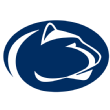
The Nittany Lions averaged 9.3 yards per pass attempt last season, far and away the best in the Big Ten and 10th in the FBS. Trace McSorley's ability to stretch the field vertically, offensive coordinator Joe Moorhead's array of run-pass options and the threat of Saquon Barkley running the ball make this a very difficult offense to defend. -- Brian Bennett
6. Clemson: 130

During its run to a national championship, Clemson racked up 130 tackles for loss, the most in the country. That perhaps isn't much of a surprise. The Tigers led the nation in TFL in 2015 too. And 2014. And 2013. Brent Venables' defenses know how to create chaos at the line of scrimmage, and with an embarrassment of riches back for 2017, led by Christian Wilkins, Dexter Lawrence and Clelin Ferrell, odds are this will be another banner season for the Tigers' front. -- David Hale
7. Washington: 6.8

The Huskies bring back starting quarterback Jake Browning, starting running back Myles Gaskin, four offensive line starters and two starting wide receivers on an offense that averaged 6.8 yards per down in 2016 (third among Power 5 teams). With a defense that has been proven to reload and an offense that returns this much firepower, the Huskies will be in the College Football Playoff conversation again in 2017. -- Jennings
8. Oklahoma: 17-1

Since he took over as Oklahoma's starting quarterback, Baker Mayfield is 17-1 in Big 12 play, with 65 total touchdowns, a completion rate of 71 percent and just nine interceptions in 18 games. -- Jake Trotter
9. LSU: 6.7

For all the talk about LSU's unproductive offense -- certainly, the passing game needs work -- the Tigers were surprisingly explosive. No SEC team averaged more yards per play than LSU's 6.7, and new offensive coordinator Matt Canada has at least two big-play threats returning in running back Derrius Guice and wide receiver D.J. Chark. -- David Ching
10. Oklahoma State: 12

The Cowboys are among seven teams -- and the only Big 12 representative -- to appear in all 12 editions of the College Football Playoff rankings since the start of the 2015 season. The others are Alabama, Clemson, Florida State, Michigan, Ohio State and Utah. -- Mitch Sherman
11. Auburn: 271.3
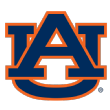
That's how many rushing yards per game Auburn had in 2016, and the entire backfield is returning for the 2017 season. It might be hard to duplicate last year's number, especially now that Jarrett Stidham is on campus and expected to be the quarterback, but it's safe to say that between Kamryn Pettway, Kerryon Johnson, Kam Martin and Malik Miller, the Tigers will once again be among the SEC leaders in rushing. -- Greg Ostendorf
12. Wisconsin: 16.6

The Badgers' defense has been nothing short of excellent the past four seasons. During that stretch, Wisconsin ranks second in the FBS in points allowed (16.6) and second in total defense (292.5 yards allowed). The only team more dominant over that period in each category is Alabama. With seven starters returning and a bunch of talented backups ready to contribute, the Badgers' defense should again be among the best in the nation. -- Jesse Temple
13. Georgia: 33.6
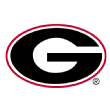
Georgia's defense ranked second in the SEC in defensive third downs in conference play. The Bulldogs allowed SEC teams to convert just 37 of 110 third downs (33.6 percent) and held five SEC teams to a conversion rate of less than 23 percent in 2016. -- Edward Aschoff
14. Michigan: 38, 39

The Wolverines return 38 percent of their offensive production (rushing and receiving yards) and 39 percent of their defensive production (tackles) from a season ago. Sure, that's low, but it isn't as low as one might think, given the mass exodus of starters on both sides of the ball. For comparison's sake, Ohio State returned only 21 percent of its offensive production in 2016 and still managed to be explosive. Michigan's next wave of playmakers was able to make an impact last season, despite not being the most featured weapons on the roster. -- Dan Murphy
15. Stanford: 779

The Cardinal have the unenviable task of replacing Christian McCaffrey, but at least in terms of his rushing yardage, Stanford is in a good position with Bryce Love. Last season, as a sophomore, Love rushed for 779 on 112 carries, including 115 yards as the starter in the bowl game. With more touches in 2017, he'll be able to show off some top-end speed. -- Jennings
16. Miami: 19.1
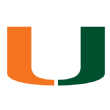
Make sure you remember the name Ahmmon Richards. As a true freshman last season, Richards finished in the top 20 nationally in yards per reception, a better average than All-ACC receivers Mike Williams, Isaiah Ford and Amba Etta-Tawo. As Miami transitions at quarterback, Richards' return to lead the receivers becomes even more important. -- Andrea Adelson
17. Kansas State: 100

The Wildcats need a reliable star at running back to take their power offense to the next level in 2017. The past three seasons, their running backs have produced a total of six 100-yard performances. Alex Barnes had two 100-yard days in 2016 and could be the solution if he stays healthy. -- Max Olson
18. Louisville: 6.3
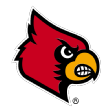
Lamar Jackson's legs didn't create yards only for himself last season. Louisville's non-QB runs averaged 6.3 yards-per-carry (third in Power 5), including a 6.7 yards-per-rush rate on first down, the best mark in the Power 5. The Cardinals need to identify a new bell cow in the backfield with Brandon Radcliff gone, but Jackson's dual-threat ability should make finding running lanes easy enough for whomever lands the job. -- Hale
19. Colorado: 6

The Buffs return their top six receivers from a season ago (every receiver who scored at least one touchdown) as well as four offensive linemen and running back Phillip Lindsay. They must replace quarterback Sefo Liufau, but his replacement, Steven Montez, played well in Liufau's absence last season. -- Jennings
20. South Florida: 4,342

Quarterback Quinton Flowers ranked 10th in the nation in total offense last season, with 4,342 total yards. He led the Bulls in rushing and passing and was responsible for 42 total touchdowns. With Flowers back, new coach Charlie Strong has a star on the rise to help ease the coaching transition. -- Adelson
21. Washington State: 89

Falk decided to return to Pullman for his senior year, giving the Cougars' offense a huge boost. He'll be without his favorite receiver, Gabe Marks, but Falk has thrown for 89 touchdowns and 10,888 yards during his career. -- Jennings
22. West Virginia: 1.75

The Mountaineers' defense held Big 12 foes to 1.75 points per drive in 2016, 1.76 per drive in 2015 and 1.65 per drive in 2014. Defensive coordinator Tony Gibson keeps building stout defenses year after year and keeps getting results, no matter how many new starters he's relying upon. -- Olson
23. Texas: 234

The biggest reason Tom Herman will be aiming for championships early in his tenure? The Texas players who were sophomores or freshmen on last year's team have already logged a total of 234 career starts. That's 29 young players who have starting experience and two or three more years of eligibility. For Herman, it's a quality foundation to build on. -- Olson
24. Boise State: 3,646
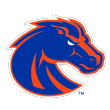
Rypien will enter his third season as the Broncos' starter after showing continual improvement the previous two seasons. In 2016, he threw for 3,646 yards and accumulated a 3:1 touchdown-to-interception ratio. -- Jennings
25. Virginia Tech: 6.5

The Hokies' pass defense was ninth among Power 5 teams in yards per attempt, which sounds typical of a Virginia Tech unit. But the secondary returned toward the top of the rankings after falling to 39th in 2015, which was the worst since at least 2004. Now three starters return from that 2016 defensive backfield, which should ensure another strong season from the defense in what will be a transitional year offensively. -- Shanker
